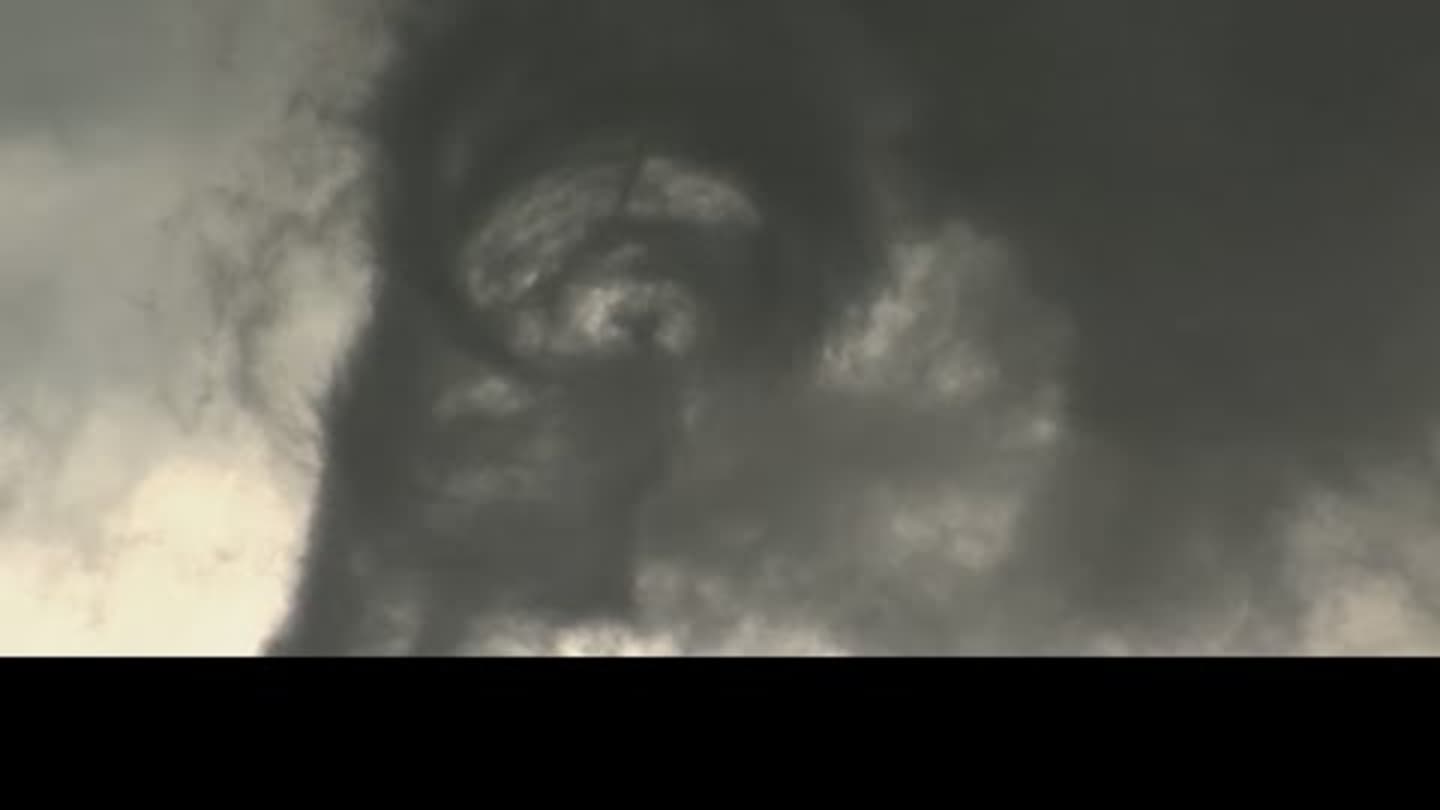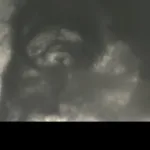Tornadoes are nature’s Most Violent Storms, captivating and terrifying in equal measure. Their destructive power is legendary, leaving a trail of devastation in Their Wake. But what lies at the heart of this fury? What secrets are hidden within the swirling vortex? While the sheer danger prevents direct observation, scientific advancements allow us to peek into the inner workings of these Incredible Phenomena. This article will explore the structure of a tornado, focusing on the fascinating world of subvortices and answering the question: what does the inside of a Tornado Look like?
Understanding the internal structure of a tornado requires a blend of observation and scientific modeling. Direct observation is, of course, incredibly dangerous and impossible to achieve safely. Instead, scientists rely on advanced radar technology and careful analysis of damage patterns left behind by tornadoes to build a picture of what’s Happening Inside. This indirect approach provides valuable insights into the complex dynamics at play Within These Powerful Storms.
This exploration will delve into the details of what scientists have learned about the interior of a tornado, revealing the surprising complexity hidden within Its Seemingly Simple Funnel Shape. We’ll examine the role of subvortices in intensifying the destructive power of tornadoes and discuss the challenges involved in studying such a dangerous and Unpredictable Natural Phenomenon.
Anatomy of a tornado
The anatomy of a tornado is Surprisingly Complex, defying the simple image of a single, swirling column of air. While the visible funnel is the Most Striking Feature, the true structure is far more intricate. At its core lies a relatively Calm Area, a region of low pressure that acts as the engine driving the tornado’S Destructive Power. This central area, often described as a “core,” is surprisingly small, Typically Ranging From 50 to 100 feet in diameter. To someone hypothetically inside, what does inside a tornado look like would be a relatively clear, Albeit Violently Windy, space.
Surrounding this calm core is a region of intense, Chaotic Motion. This area is characterized by rapidly Rotating Air, Carrying Debris, rain, and dust. The speed of this rotation is what generates the extremely high wind speeds responsible for the immense destructive force of tornadoes. The swirling motion isn’T Uniform; instead, it’s often characterized by multiple smaller, rotating columns of air known as subvortices.
 Trypophobia Barnacles: Evolutionary Roots of Hole Fear
Trypophobia Barnacles: Evolutionary Roots of Hole FearThese subvortices are a crucial element of a tornado’s structure. They are smaller, more intense vortices embedded within the larger, Main Vortex. Their presence significantly increases the overall wind speed and the destructive power of the tornado. The interaction and movement of these subvortices contribute to the unpredictable and erratic behavior often observed in tornadoes, Making Them Exceptionally Hazardous.
Subvortices: a closer look
Subvortices are a key component in understanding the destructive power of tornadoes. These smaller, swirling vortices are embedded within the larger, main vortex of the tornado. Imagine them as smaller whirlpools within a larger, More Powerful Whirlpool. They are responsible for much of the intense, localized damage seen in tornado tracks. The rapid rotation of these subvortices significantly amplifies the wind speeds, Leading To More Concentrated Destruction.
The formation of subvortices is a Complex Process, not fully understood by scientists. However, it’s believed that they arise from instabilities within the main vortex. These instabilities can be caused by variations in air pressure, temperature, and moisture. The interaction between these subvortices and the main vortex is dynamic and chaotic, contributing to the unpredictable nature of tornadoes. Understanding their formation and behavior is crucial for improving tornado forecasting and Warning Systems.
The presence of subvortices significantly complicates the question of what does a tornado look like inside. While the main vortex might appear as a relatively clear, Albeit Violent, funnel, the subvortices would add another layer of complexity, creating a chaotic and highly turbulent environment. These smaller vortices can lead to unpredictable shifts in wind direction and speed, making survival within a tornado extremely unlikely.
Observing tornadoes remotely
Given the extreme danger, directly observing the inside of a tornado is impossible. However, scientists have developed ingenious methods for Remotely Studying These Powerful Storms. Mobile Doppler radar systems are crucial tools in this endeavor. These radars are deployed close to Developing Tornadoes, allowing scientists to gather detailed information about the wind speeds, direction, and overall structure of the storm. The data collected helps build a three-dimensional picture of the tornado’s interior, offering valuable insights into its dynamics.
The data from mobile Doppler radar reveals a complex structure. It shows the relatively calm core surrounded by a rapidly rotating annulus of debris and rain. This information allows scientists to create models that simulate the conditions inside a tornado, helping to understand the forces at play and the reasons behind its Destructive Power. By analyzing the radar data, Researchers Can Estimate Wind Speeds, track the movement of subvortices, and gain a better understanding of how tornadoes form and evolve.
While these remote sensing techniques provide Invaluable Data, They Still don’t offer a direct visual representation of what inside a tornado looks like. The information gathered is indirect, based on the interpretation of radar signals. However, this data is crucial for improving our understanding of tornadoes, leading to better forecasting models and ultimately, Saving Lives. The combination of radar data and damage surveys provides the closest approximation we currently have to understanding the internal structure of these devastating storms.
The challenges of direct observation
Direct observation of a tornado’s interior remains a significant challenge, primarily due to the inherent dangers involved. The extreme wind speeds, Flying Debris, and unpredictable nature of tornadoes make it virtually impossible to safely deploy any kind of observational equipment or personnel into the heart of the storm. Any attempt to do so would be incredibly risky and likely fatal. This inherent danger severely limits our ability to directly witness and document the internal processes of a tornado.
Even if a safe method were devised, the short lifespan of most tornadoes Presents Another Significant Hurdle. Tornadoes are often short-lived, Lasting Only Minutes, making it extremely difficult to deploy and retrieve equipment in time. The rapid changes in the storm’s structure and intensity further complicate the challenge. The dynamic nature of the tornado, with its shifting subvortices and unpredictable behavior, makes it difficult to capture consistent and reliable data.
The combination of extreme danger and the short lifespan of tornadoes makes Direct Observation Extremely Difficult. While technological advancements might one day allow for safer and more efficient Data Collection, current methods rely on remote sensing techniques. These techniques, While Providing Valuable Insights, cannot fully replicate the experience of directly observing what does inside a Tornado Look Like. The quest for direct observation remains a significant challenge in the field of meteorology.
Future research and understanding
Despite the challenges, research into tornado structure continues to advance. Scientists are constantly developing new technologies and refining existing methods to improve our understanding of these powerful storms. The use of more sophisticated radar systems, coupled with advanced data analysis techniques, is leading to more detailed and accurate models of tornado dynamics. This includes a more precise understanding of the role of subvortices and the complex interactions within the tornado’s core.
Further research is focusing on improving tornado prediction and warning systems. By gaining a more comprehensive understanding of the processes that lead to tornado formation and intensification, scientists can develop better forecasting models, providing more accurate and timely warnings to communities at risk. This includes a better understanding of the environmental conditions that favor tornado development and the factors that influence their intensity and track.
Ultimately, the goal is to reduce the loss of life and property caused by tornadoes. While we may never be able to directly observe the interior of a tornado with ease, continued research will provide a clearer picture of its structure and behavior. This improved understanding will lead to Better Forecasting, More Effective Warning Systems, and ultimately, a safer future for those living in areas prone to tornadoes. The ongoing quest to understand what does inside a tornado look like, Even Indirectly, is a vital step in this process.










